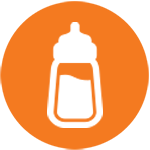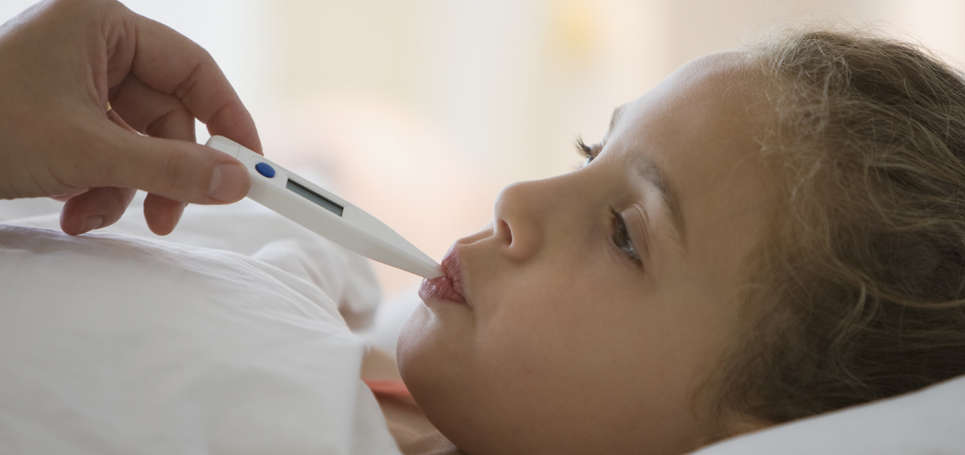When little ones have a fever (generally 38.0°C / 100.4°F and up), it’s all about making sure they’re comfortable. If they’re flushed, fussy or in pain, bringing their fever down can help them rest and feel better.
To help reduce a baby’s fever:

Try a lukewarm bath. If you’ve given your baby medicine, this can work well right after. But stop if you notice shivering, because chills can make babies’ temperature rise.

Offer lots to drink.

Dress them light. And keep their room not too hot, not too cool.
Call your pediatrician if your child:
Is under 3 months (12 weeks) and has a temperature of 38.0°C / 100.4°F or higher
Is over 3 months (12 weeks) and has a temperature of over 38.0°C / 100.4°F
Is between 3 and 24 months and still has a fever 38.0°C / 100.4°F or higher after 24 hours
Has a temperature over 38.0°C / 100.4°F plus any of these symptoms:
Severe headache
Sore throat or ear pain
Repeated vomiting or diarrhea
Stiff neck
Strange rash
Looks very ill, or extremely drowsy or fussy
Has been in a very hot place (like an overheated car)
Has underlying immune system problems, seizure history, or takes steroids
Seems to be getting worse, even after being treated
To help prevent your little one’s next fever, make sure everyone at home washes their hands often, and doesn’t share utensils, glasses or towels.
Note: This information does not constitute a diagnosis of any medical condition or medical advice. Do not substitute the information herein for medical advice. Always consult your physician or health care provider if you have medical or health questions or concerns.

